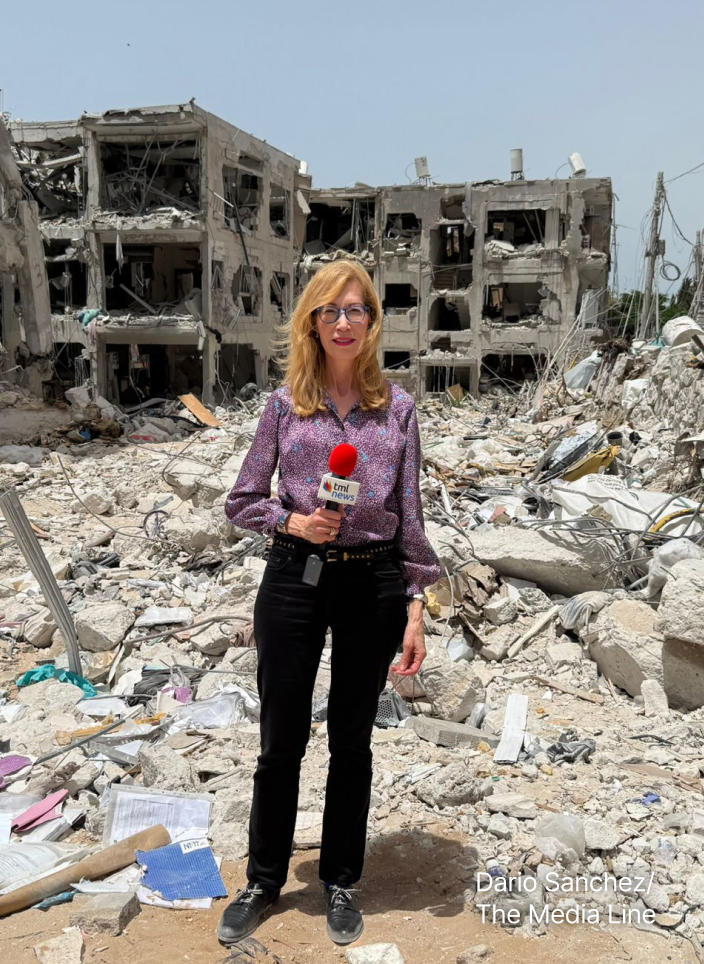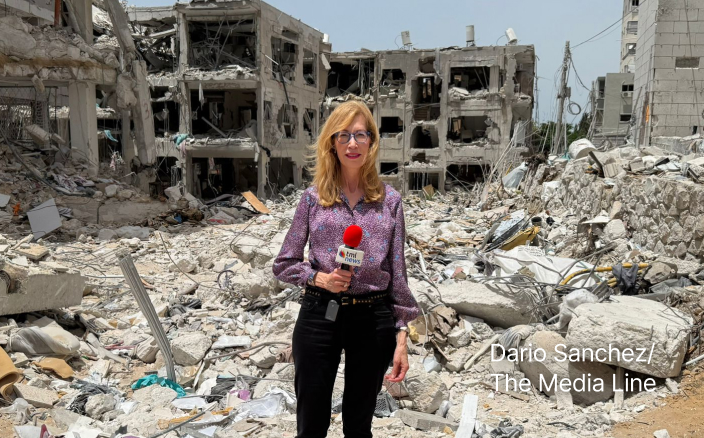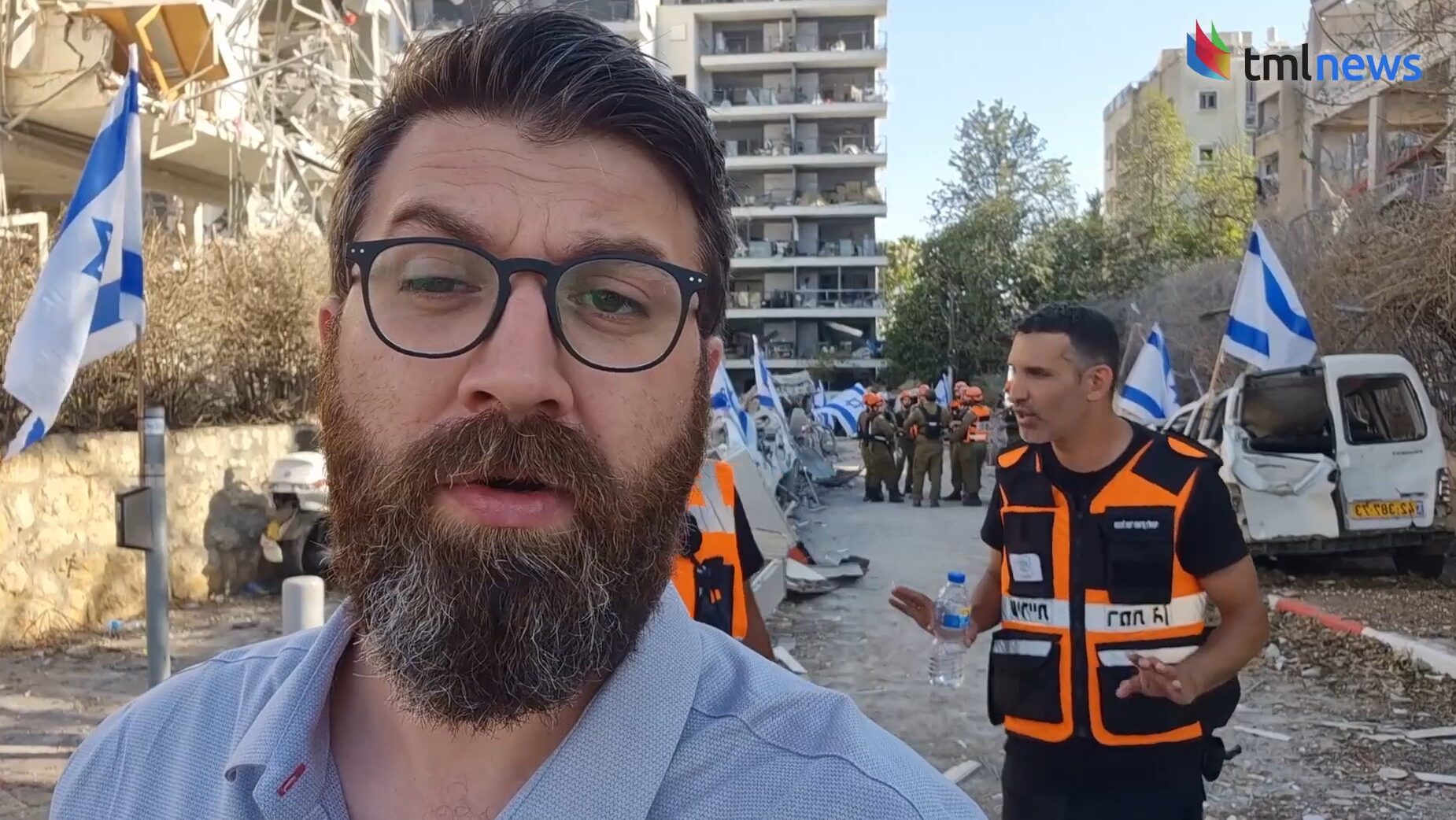‘If We Hadn’t Gone Into the Safe Room, We Wouldn’t Be Alive’
A resident’s account of a direct missile strike near Tel Aviv reveals the deadly precision and psychological toll of Iran’s early attacks
As the Israel-Iran war enters its sixth night, patterns set during the early stages—particularly the ballistic missile barrage on night two—have come to define the pace and intensity of the conflict. What began as a rapid exchange of strikes has since hardened into a sustained campaign marked by civilian casualties, strategic escalation, and deepening regional instability.
That second night, between Friday and Saturday, saw one of the first major Iranian missile attacks on Israeli civilian centers. A ballistic missile struck a residential neighborhood in the Tel Aviv suburbs, killing a woman and injuring at least 20 others. The missile made a direct hit on an apartment building, triggering a blast that shattered windows and walls hundreds of yards away. Emergency crews responded to widespread structural damage, with several buildings deemed uninhabitable.
If we hadn’t gone into the safe room, we wouldn’t be alive
Amit, a resident who survived the strike, described the moment it hit. “We had just finished dinner at the neighbors’ when the siren went off. Some of us stayed in their safe room, and some ran back to ours. Then there was this incredibly powerful boom. The building shook—it was a direct hit. When we stepped out, we saw the destruction. If we hadn’t gone into the safe room, we wouldn’t be alive.”
Give the gift of hope
We practice what we preach:
accurate, fearless journalism. But we can't do it alone.
- On the ground in Gaza, Syria, Israel, Egypt, Pakistan, and more
- Our program trained more than 100 journalists
- Calling out fake news and reporting real facts
- On the ground in Gaza, Syria, Israel, Egypt, Pakistan, and more
- Our program trained more than 100 journalists
- Calling out fake news and reporting real facts
Join us.
Support The Media Line. Save democracy.


In Tamra, a predominantly Arab town in northern Israel, another Iranian missile caused a partial building collapse, critically injuring multiple residents. Local hospitals reported being stretched to their limits as they responded to simultaneous strikes.
These attacks followed Israeli airstrikes on Iranian targets that reportedly hit sites linked to Tehran’s missile infrastructure and nuclear program. Iran’s swift retaliation—using dozens of ballistic missiles, some possibly hypersonic—marked a sharp escalation in the long-running shadow conflict between the two countries.
Although many missiles were intercepted by Israel’s air defense systems, several evaded detection and struck populated areas. Defense analysts noted that Iran’s use of maneuverable and harder-to-intercept weapons could indicate a shift toward more aggressive regional posturing.
The Media Line was on the ground in the Tel Aviv suburbs following the strike, documenting scenes of devastation: burning debris, collapsed structures, and emergency crews working overnight to treat the wounded and secure the area.
That night also reinforced the critical importance of Israel’s network of public bomb shelters and in-home safe rooms. Authorities have since urged residents across the country to remain near protected spaces as missile alerts continue nightly.
Now six nights into the conflict, Israeli military officials remain on high alert. While Israel has expanded its own air campaign into Iranian territory—including reported strikes on command infrastructure—Tehran has continued to launch missiles toward Israeli cities. Civilian infrastructure remains at risk, and thousands of Israelis are still spending nights in shelters.
What was once viewed as a limited military exchange has developed into a broader confrontation. The events of night two—initially seen as retaliation—are now understood as the beginning of a longer campaign, with no clear end in sight.

